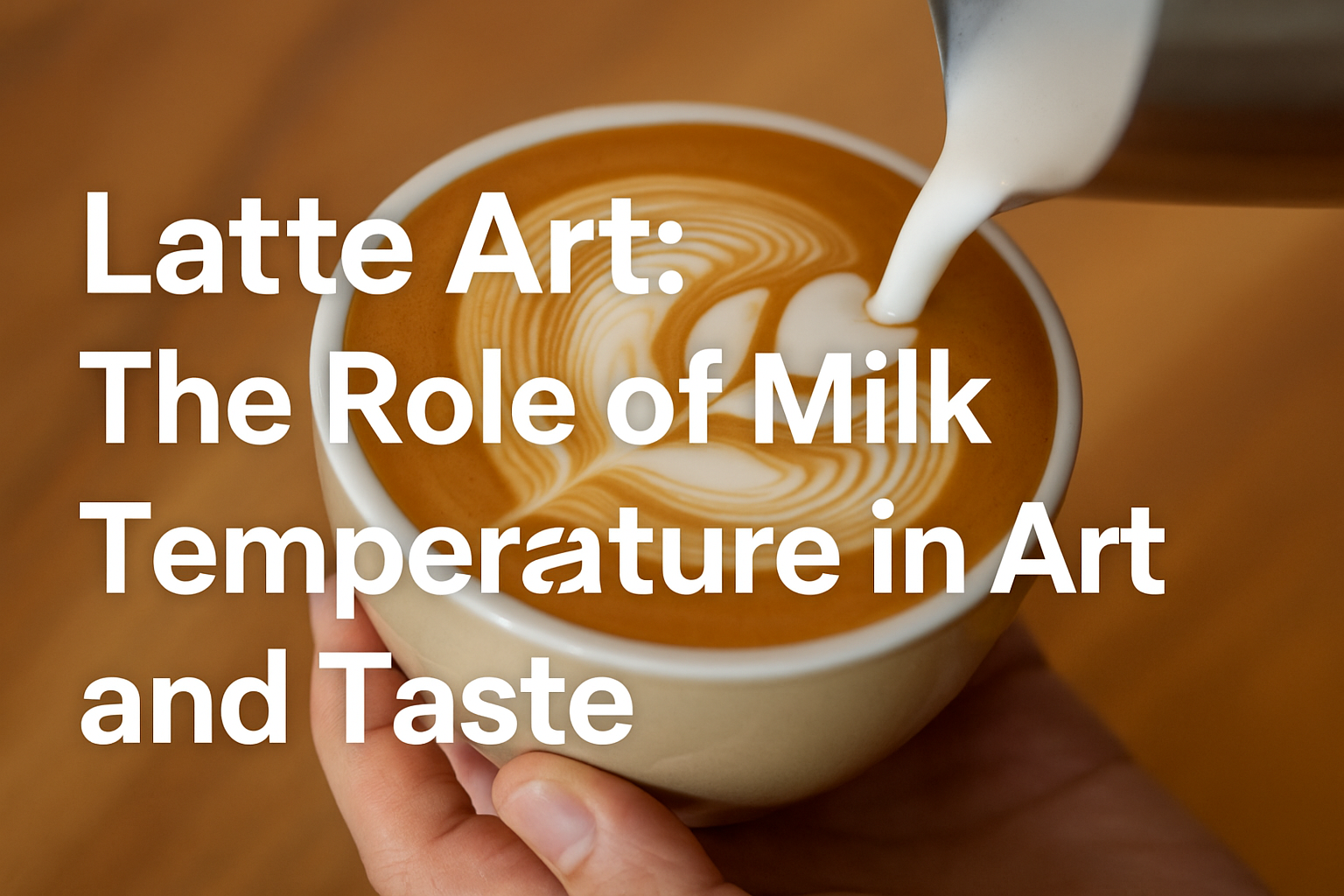Milk temperature is one of the most overlooked factors in both latte art success and coffee flavor.
As a barista, you can have perfectly pulled espresso and great milk texture, but if your milk is too hot or too cold, your latte art will fall apart — and worse, your drink won’t taste right.
In this guide, we’ll break down why milk temperature matters so much, what the ideal temperature range is for steaming milk, how it affects latte art flow, and how it influences the overall drinking experience.
If you want your art to shine and your drinks to delight, temperature control needs to become second nature.
Why Milk Temperature Is So Important
There are three key reasons why milk temperature plays a critical role:
- Taste – Overheated milk can ruin the natural sweetness and create a cooked or burnt flavor
- Texture – Ideal steaming temperatures enhance microfoam stability and consistency
- Latte art performance – The temperature of milk affects how it pours, flows, and holds designs
Getting the milk to the correct temperature is what ties everything together — flavor, texture, and visual presentation.
The Ideal Milk Temperature Range
For most milk-based espresso drinks, the sweet spot for milk temperature is:
- Between 55°C and 65°C (131°F to 149°F)
Let’s break that down further:
- Below 50°C (122°F): The drink feels lukewarm and lacks body
- 55–60°C (131–140°F): Optimal for texture, sweetness, and latte art performance
- 60–65°C (140–149°F): Acceptable for customers who prefer hotter drinks, but still safe for flavor and texture
- Above 70°C (158°F): Proteins denature, sugars break down, and the milk tastes “cooked” or burnt
Always aim to stay below 70°C to preserve milk’s natural sweetness and avoid scalding.
How Temperature Affects Latte Art
1. Pour Speed and Flow
When milk is steamed to the ideal temperature (55–65°C), it:
- Flows smoothly from the pitcher
- Combines easily with espresso crema
- Creates stable designs that float on the surface
If the milk is too hot, it becomes more liquid and loses viscosity, making it difficult to control the pour. Designs may sink, stretch, or fade quickly.
2. Crema Stability
Hot milk can break the crema, especially if poured aggressively. This ruins contrast and clarity in your design.
When milk is at the correct temperature, it gently blends with the crema, allowing your shapes to form cleanly and remain visible.
3. Design Sharpness
Lower temperatures (around 55°C) create slightly thicker microfoam, which tends to hold its shape longer. This makes it easier to pour detailed designs like rosettas or tulips.
Hotter milk becomes too loose, and the art may blur or dissipate before serving.
How Temperature Affects Taste and Mouthfeel
Milk has natural sugars (mainly lactose), and these sugars begin to break down into sweeter compounds when heated.
Here’s how temperature affects flavor:
- 50–60°C: Sweetest range, brings out milk’s natural creaminess
- 65–70°C: Slightly less sweet, but still enjoyable
- Over 70°C: Sweetness declines, and “cooked milk” flavors develop
In terms of mouthfeel:
- Properly heated milk should feel silky, smooth, and round on the tongue
- Overheated milk feels thin or chalky
- Underheated milk feels watery or cold, and lacks integration with espresso
If your customers ever complain that a drink “tastes burnt,” it’s likely because the milk was steamed too hot — not because the coffee was over-roasted.
How to Control Milk Temperature Consistently
Baristas often steam by feel, but when learning, a thermometer is your best friend.
Option 1: Use a Thermometer
- Clip a milk thermometer to your pitcher
- Turn off the steam at 60°C–65°C
- Wait a second before removing the wand to prevent overshooting
This method is especially useful in training or when using unfamiliar equipment.
Option 2: Learn the Hand Test (Touch Method)
Most experienced baristas use the “hand test”:
- Hold the base of the pitcher as you steam
- When the pitcher becomes just too hot to hold comfortably, the milk is around 60–65°C
Be careful — this takes practice. If you’re unsure, start with a thermometer to train your muscle memory.
Option 3: Use Timed Steaming
With consistent equipment and a standard amount of milk, you can learn how long it takes to reach target temperature.
For example:
- 6 oz of milk might take 7–9 seconds
- 10 oz of milk might take 10–12 seconds
But time should always be secondary to touch and visual cues.
Steaming for Different Drinks
Different drinks call for slightly different milk temperatures:
- Flat white: 55–60°C (lower temp to highlight espresso)
- Latte: 60–65°C (balanced flavor and warmth)
- Cappuccino: 60–65°C (thicker foam, same temp range)
- Extra hot latte (if requested): max 70°C — never go higher
Communicate with customers who ask for hotter drinks. Explain that very hot milk can negatively affect flavor, and offer an alternative that’s still enjoyable.
Milk Type and Temperature Behavior
Different milks react differently to heat:
Whole Milk
- Best texture and sweetness
- High fat content helps with mouthfeel
- Ideal steaming range: 55–65°C
Skim or Low-Fat Milk
- Lighter body, more foam
- Less sweet
- Can overheat easily
Oat Milk
- Barista versions steam well
- Great balance of sweetness and texture
- Ideal steaming range: 55–60°C to avoid separation
Almond and Soy Milk
- Prone to curdling with hot espresso
- Steam gently and avoid going above 60°C
Always use barista formulations for better stability and texture with alternative milks.
How to Practice Milk Temperature Awareness
To build better instincts:
- Steam milk with a thermometer for a week and note when it feels “just right”
- Switch to the touch method and compare your guess to thermometer readings
- Experiment with different temperatures and taste the difference
- Practice steaming smaller and larger quantities to adjust your timing and technique
The more attention you pay to milk temperature now, the less you’ll have to think about it during busy shifts.
Final Thoughts: Temperature Is a Skill, Not a Guess
Latte art isn’t just about the pour — it starts with the temperature and texture of your milk. Get this right, and every step after becomes easier. Your drinks will taste sweeter, feel smoother, and look cleaner.
As a barista, controlling milk temperature shows you care about both form and function. You’re not just pouring patterns — you’re crafting drinks that deliver flavor, warmth, and visual appeal.
So next time you steam milk, don’t leave it to chance. Make temperature your ally, and every cup will show your skill.

Marcelo Rodrigues is a passionate barista with over 7 years of experience in specialty coffee. He’s worked in top cafés, led barista training sessions, and now shares practical tips to help beginners and coffee lovers improve their skills. Through this blog, Marcel makes the world of coffee more accessible—one cup at a time.

